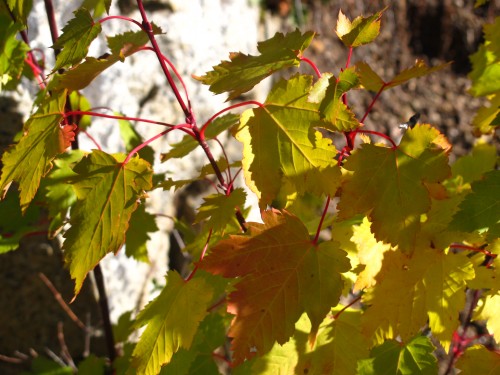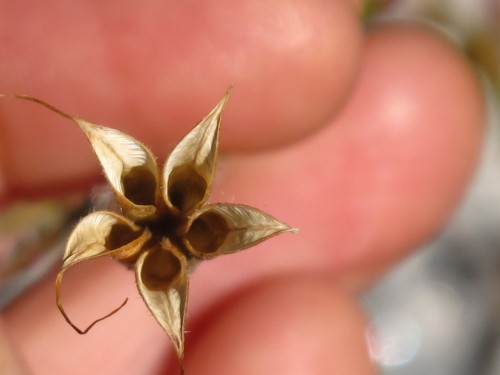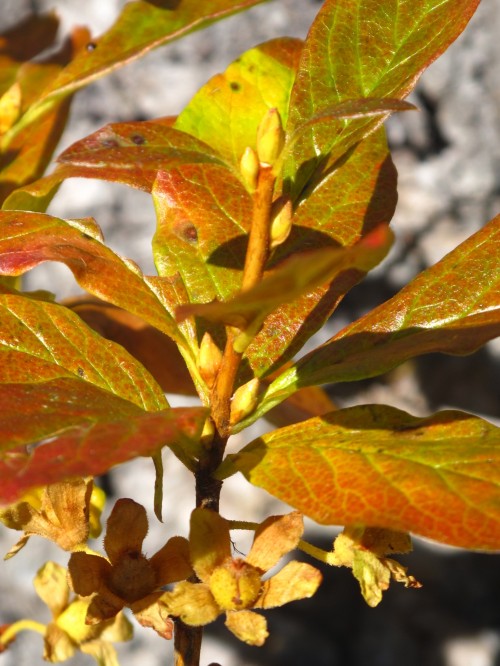Ready? Set? Go! Autumn!
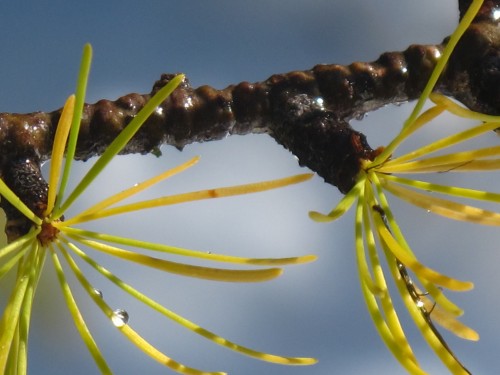
Signs of fall tend to be subtle around the Environmental Learning Center, in the plant world, at least: We live in a dense coniferous forest, so the landscape remains mostly a swath of green. But the traditional seasonal hues awaited Graduate Cohort 13 on the east side of the peaks during our recent tri-annual Natural History Retreat. This year’s Retreat was a tad abridged due to….politics such as, um, a government shut-down. We rerouted, replanned, and still managed to re-treat ourselves to the explosive rainbow of the dry side. Stoplight shades of red, yellow, and green were most prominent, punctuated by flaming peach from the turning leaves of Spirea and faded indigo from the last elderberries drooping on roadside canes (the berries were gone a month ago here in the wet west). A sampling of nature’s floral palette? Sure!
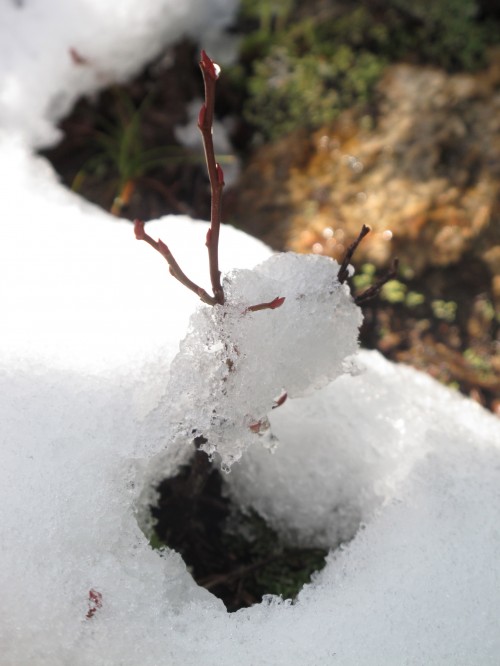 An unidentified twig with soft carmine growth buds pokes through the snow on Cutthroat Pass Trail.
An unidentified twig with soft carmine growth buds pokes through the snow on Cutthroat Pass Trail.
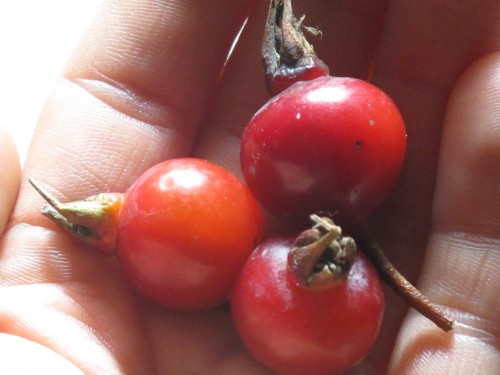 These rose hips, a.k.a. the fruit of the rose flower, were some of the biggest, roundest, and reddest hips I’d ever seen. Notably high in vitamin C, the hips are dried and consumed in everything from puddings to tea to candy.
These rose hips, a.k.a. the fruit of the rose flower, were some of the biggest, roundest, and reddest hips I’d ever seen. Notably high in vitamin C, the hips are dried and consumed in everything from puddings to tea to candy.
No wonder their name means “little apple”: Pea-sized globes of manzanita berries (Arctostaphylos spp.) alight the east side in the Chewach River Canyon, site of 2001’s Thirty-Mile Fire. These plants are a help to the forest ecosystem after a fire because they share many of the same mycorrhizal partner species with conifers, and maintain the fungal communities until the post-fire conifer seedlings eventually germinate.
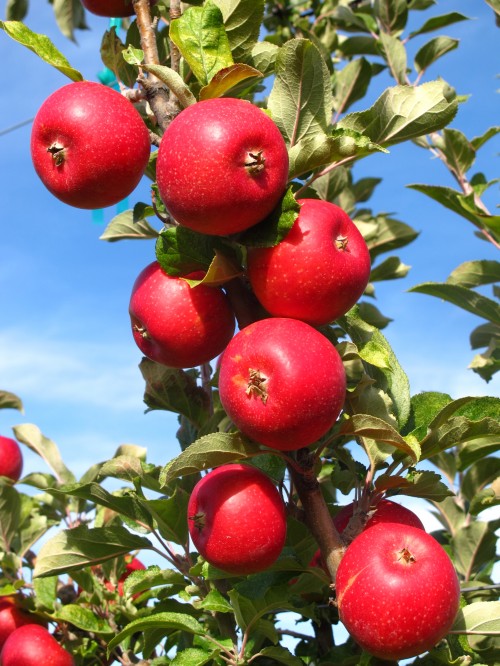 …And the big ones. Espaliered apples at The Methow Valley Cider House.
…And the big ones. Espaliered apples at The Methow Valley Cider House.
The flexible, licorice-red stems and petioles of the Douglas maple.
Perhaps fireweed’s (Chamerion angustifolium) name refers to two characteristics: Normally, I immediately think of its capacities as a nitrogen fixer, being one of the first species to come in to a burned area. But check out it’s scarlet leaves and soft, cobwebby seeds? Maybe the moniker has more to do the tongues of flames and billows of smoke? Photo by Elissa Kobrin.
Sometimes a plant’s fruit is just as stunning as its blossom. An unidentified star-shaped fruit — a skeleton of a former flower (a columbine, maybe?) — showing off five funnels that once contained seeds, in the Chewach River Canyon.
More fruits: A rhododendron on the Cutthroat Pass Trail transformed from green and flower-laden to bronze and petal-less. Note how the fruits are in the process of forming (the stigmas are still attached, dangling down).
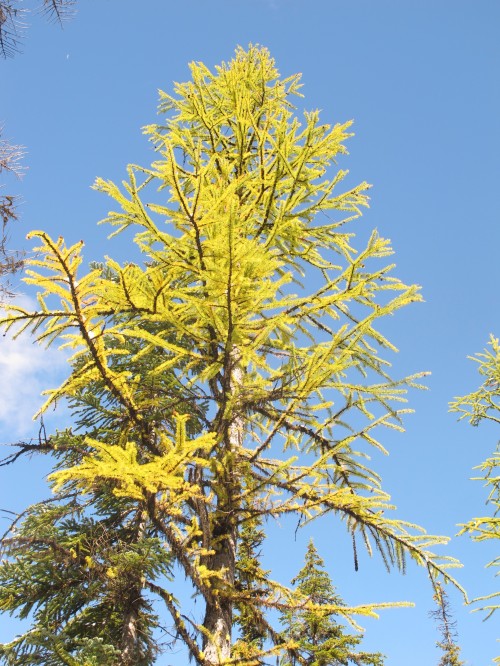 The chartreuse needles of the subalpine larch (Larix lyallii) are deciduous, making this special tree a golden anomaly among conifers. Dropping their needles, rather than remaining evergreen, is an adaptation to being both the most northerly and the most alpine genus of all the trees in the Northern Hemisphere.
The chartreuse needles of the subalpine larch (Larix lyallii) are deciduous, making this special tree a golden anomaly among conifers. Dropping their needles, rather than remaining evergreen, is an adaptation to being both the most northerly and the most alpine genus of all the trees in the Northern Hemisphere.
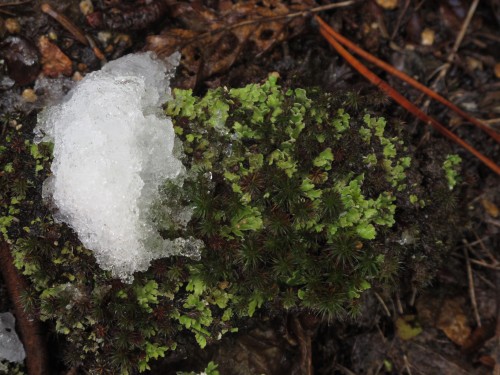 Unidentified moss persevering through the snow.
Unidentified moss persevering through the snow.
It took us a while to determine that these needles belong to a subalpine fir (Abies lasiocarpa), as opposed to a Pacific silver fir (Abies amabilis). See the white lines? Those are called, in botanical circles, “stomatal bands,” which refer to the microscopic pores on the surface of the leaf which take in carbon dioxide used for photosynthesis. The subalpine fir has two strips on the underside of the needle and on large one on the top, whereas the silver fir has two underneath and a solid green top.
 Short and shrubby quaking aspen (Populus tremuloides) trees re-colonizing the site of the 2001 Thirty-Mile Fire provide a burst of spring green amidst ghostly snags and charred logs. Aspen are associated with nitrogen-fixing bacteria, which makes them exceptionally helpful to the ecosystem after a raging fire.
Short and shrubby quaking aspen (Populus tremuloides) trees re-colonizing the site of the 2001 Thirty-Mile Fire provide a burst of spring green amidst ghostly snags and charred logs. Aspen are associated with nitrogen-fixing bacteria, which makes them exceptionally helpful to the ecosystem after a raging fire.
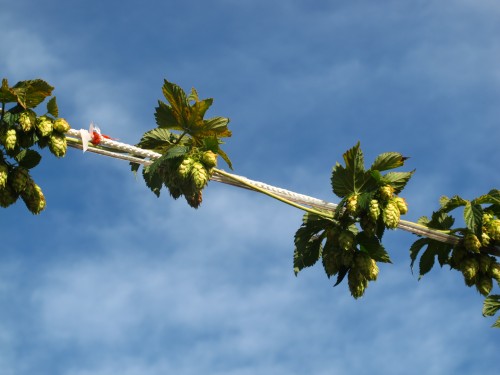 Little bunches of bitter: Trellised hops line the sky above the Methow Valley Cider House.
Little bunches of bitter: Trellised hops line the sky above the Methow Valley Cider House.
Be you on the east side or the west side or somewhere in between, above or below, may the shades of autumn reveal themselves as the days grow shorter.
Leading photo: Like fall’s fireworks, the needles of the subalpine larch burst bright yellow and drop. Note how they emerge in a bunch from nodes along the branch. By June, these bare nodes sprout bright green, new needles, lending yet another hue to contrast with the forest green of the other conifers.
Katherine Renz is a graduate student in North Cascades Institute and Western Washington University’s M.Ed. program. She is currently one of two editors of Chattermarks. She fancies ethnobotany, the Methow Valley and weird plant adaptations.



